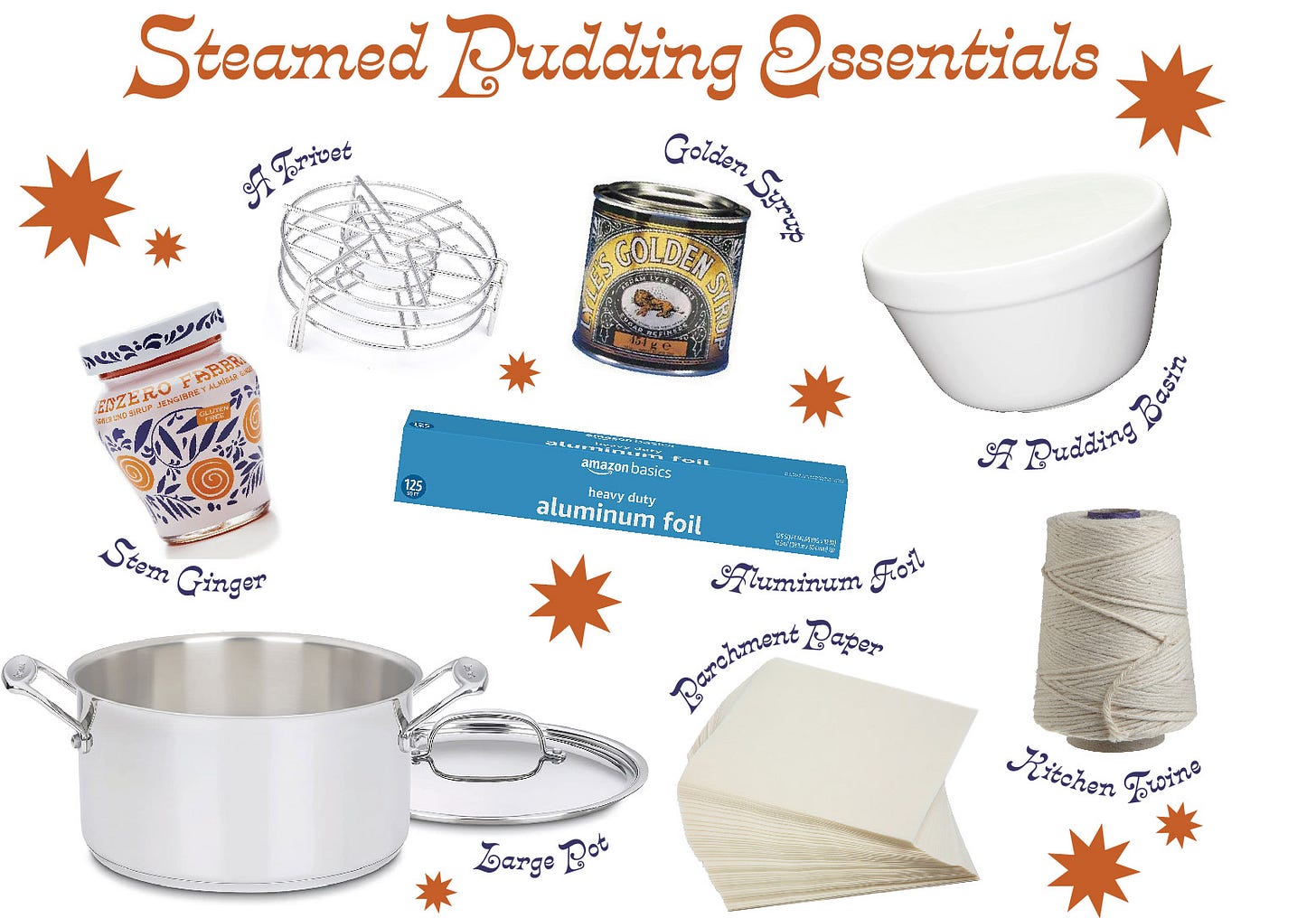Because of the intense heat (and my third-floor apartment), I haven’t been cooking as much this month. So instead of a recipe, this month’s newsletter skews educational (sorry!). But don’t worry, recipes will make their grand return next month (or whenever the weather decides to chill—literally). But for now, this month’s topic: British puddings.
A Primer on British Puddings
I go through mild (but deep) bouts of fascination with various food types/food cultures. This time, my eye is trained on British steamed puddings, a.k.a. puds. Why I’m craving sticky sweet, fudgy, rich, wintry desserts during the summer is beyond me (perhaps I’m subconsciously looking for comfort…who knows?). Regardless, they are an indulgent (and impressive ) dessert worth knowing about.
The origin of steamed puddings is murky; some posture the term ‘pudding’ was originally a term for boiled sausages (think blood pudding), but evolved to encompass a variety of sweet and savory dishes that were (mostly) boiled (some notable exceptions are Yorkshire pudding, which is baked).
Boiling in this case really means placing the filled, wrapped and covered baking dish, called a pudding basin, into a pot of water and boiling the water for a few hours, thus steaming the pudding.
So, what is a steamed pudding?
A steamed pudding is a cake-like batter (in the UK, cake is often called sponge) that’s steamed in a pudding basin so it doesn’t get the film-like crust that a baked cake gets. Some cakes (the kind I’m very much attracted to) get a layer of golden syrup at the bottom of the pudding basin, which results in an ooey-gooey, upside-down-cake-esque top after cooked and inverted. They’re often served with creme anglais (a.k.a custard) poured over the still-warm, steaming pud. Heaven, in my mind.
What you need to make a steamed, treacle-y pud
Here are a few items you’ll need to get started steaming puds:
Stem Ginger: This is basically ginger that’s been stewed in syrup until it’s nearly translucent. While technically not required, the syrup (and bits of ginger) will add a spicy kick to your pud.
Golden Syrup (a.k.a Treacle): This is a classic ingredient in British baking; it’s basically an inverted sugar syrup with a faint caramel flavor. It helps keep your pudding moist, sticky, and ooey-gooey. You can sub in maple syrup or molasses for a different kind of flavor.
Pudding Basin: This is where the batter goes! It creates that classic, domed pudding shape.
A Trivet: A trivet elevates the pudding basin from the bottom of the pot.
Large Pot: This is what you’ll use to cook your pudding. Place a trivet on the bottom of the pot, place the pudding basin on top of the trivet, then fill up to halfway up the side of the basin with water before covering and bringing to a boil. You might have to top it off with water as it steams.
Kitchen twine, aluminum foil and parchment paper: These are used to make a lid of sorts, as well as a handle to lift your pudding from the pot once it’s done cooking. The BBC has a great primer on how to cover your pudding basin with these items.
Along with a few recipes to get you started:
Vanilla Custard (for serving with your pud!)
Happy pudding-making!





